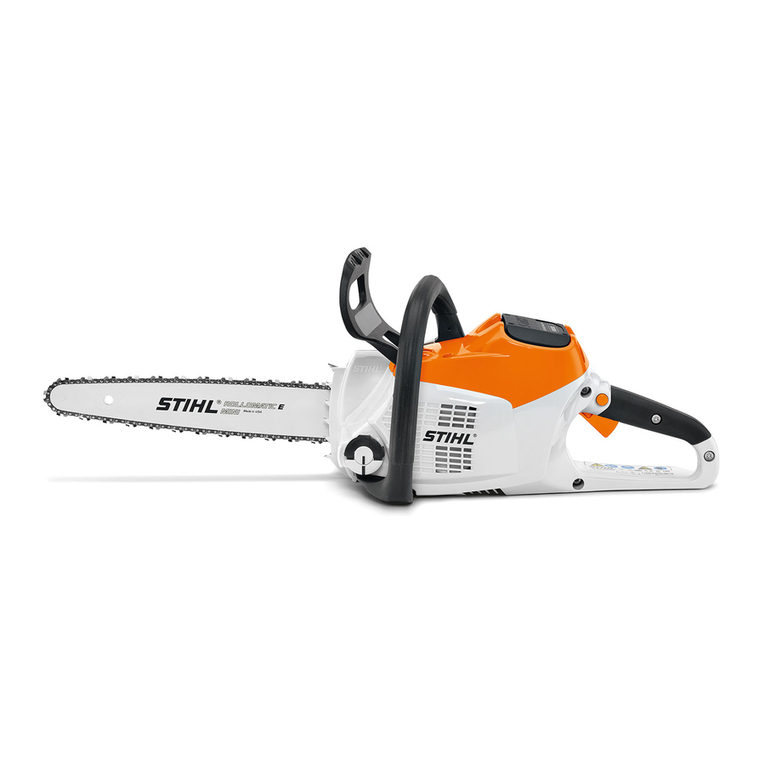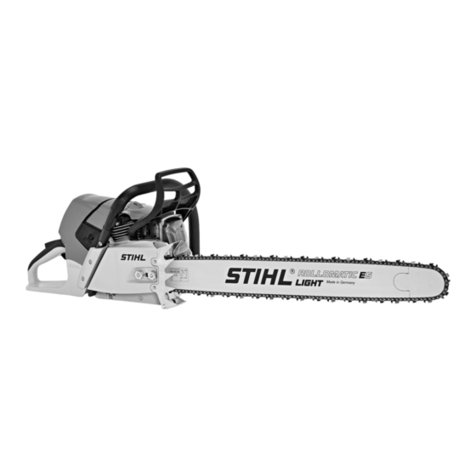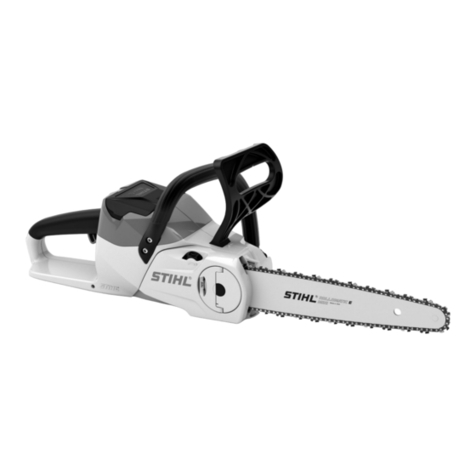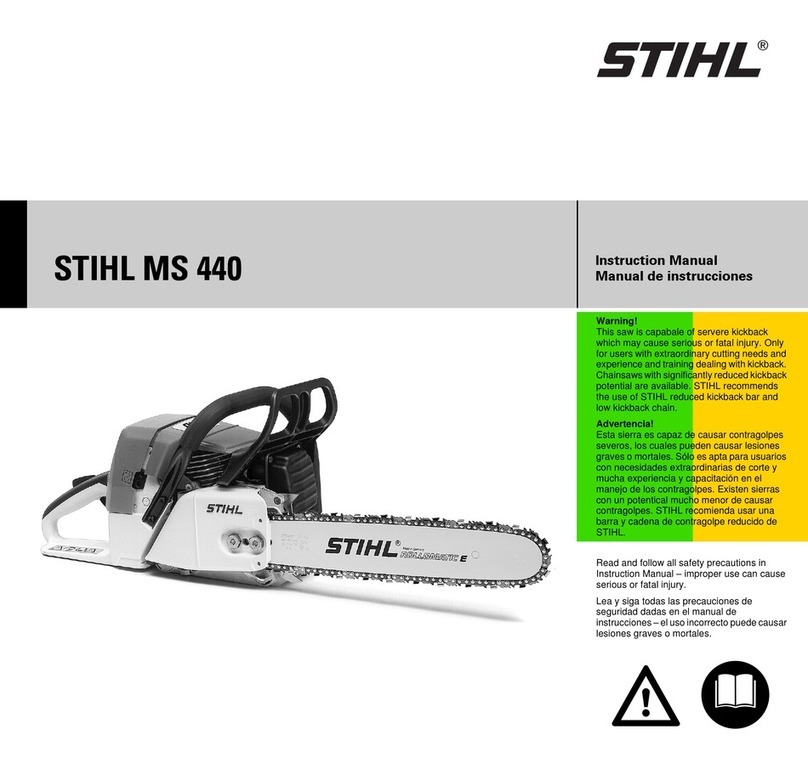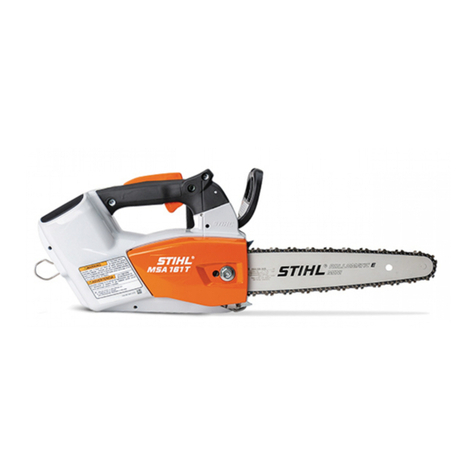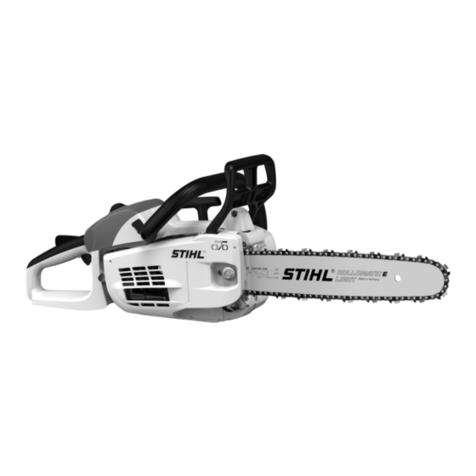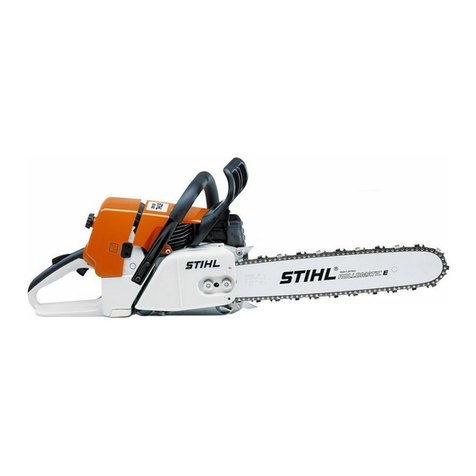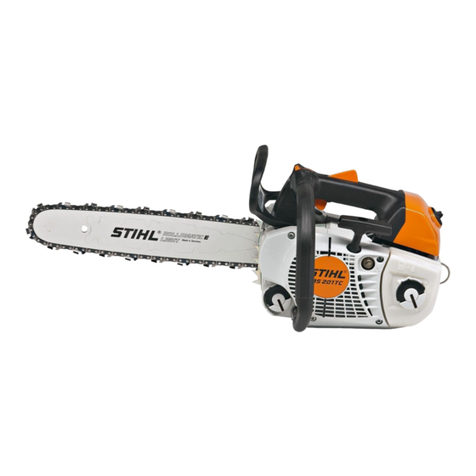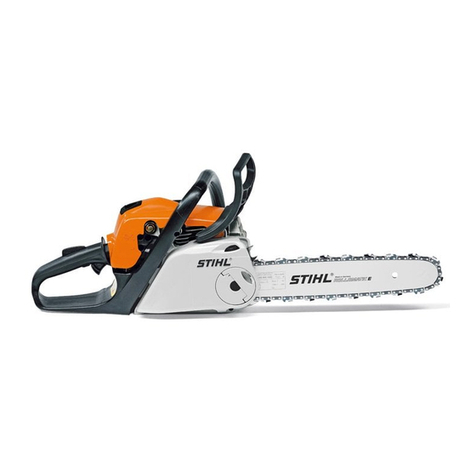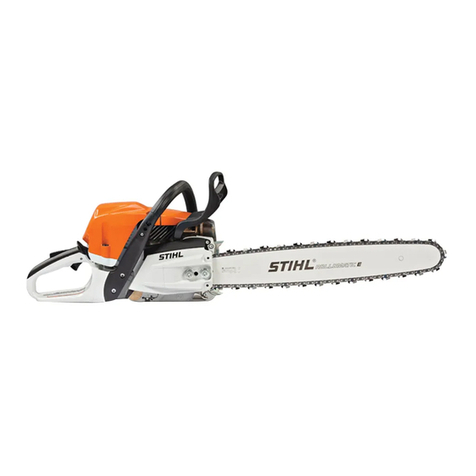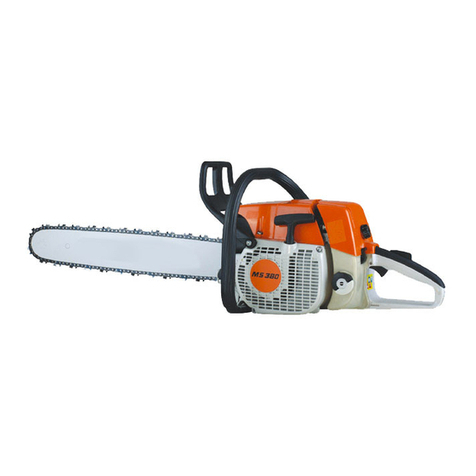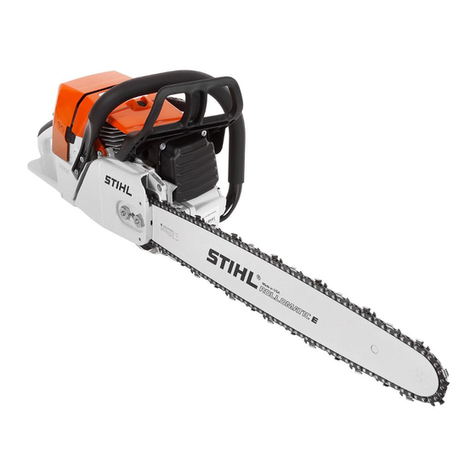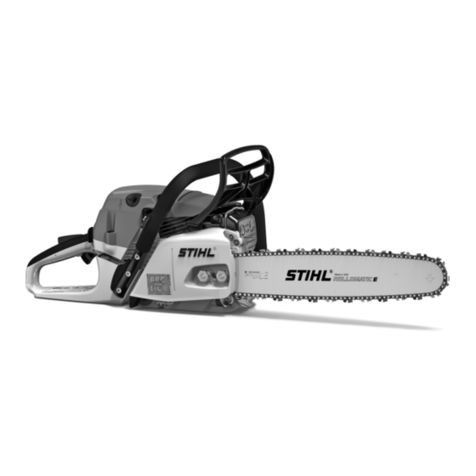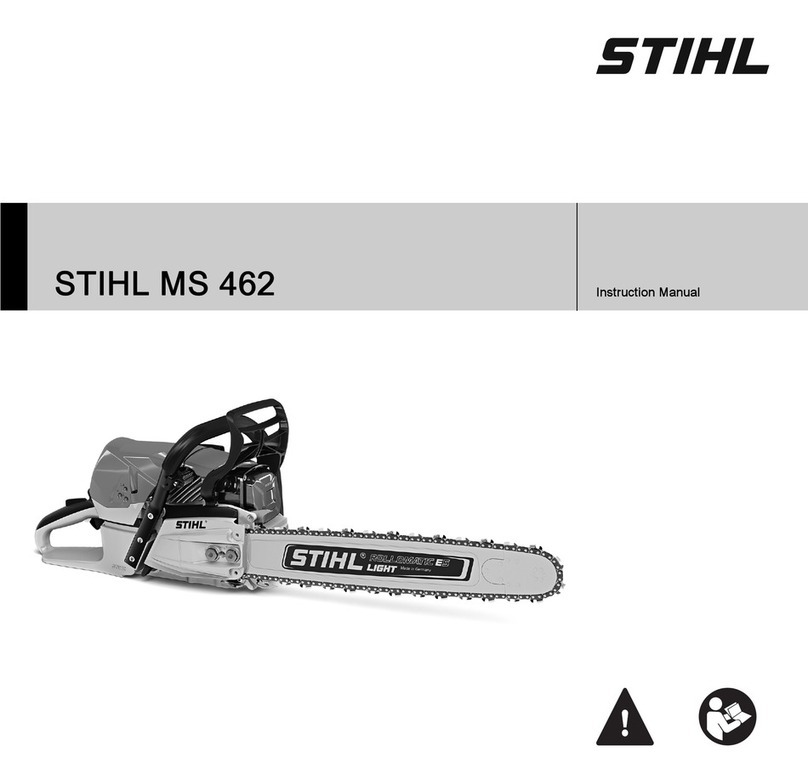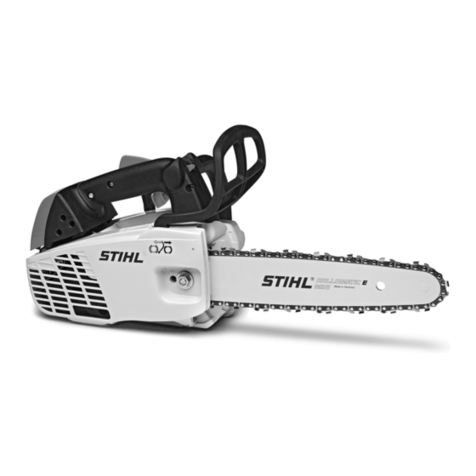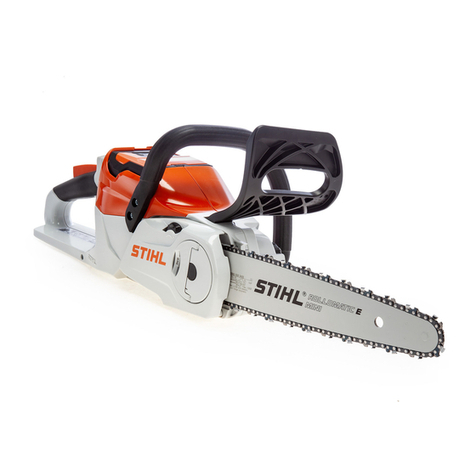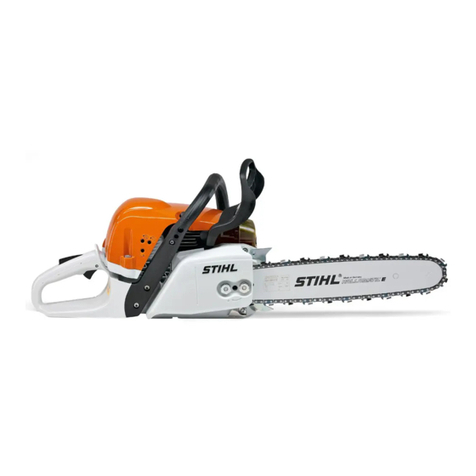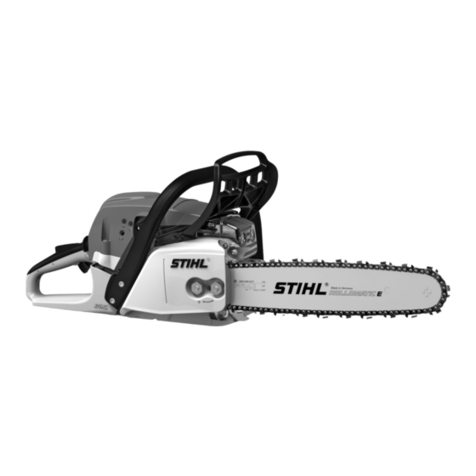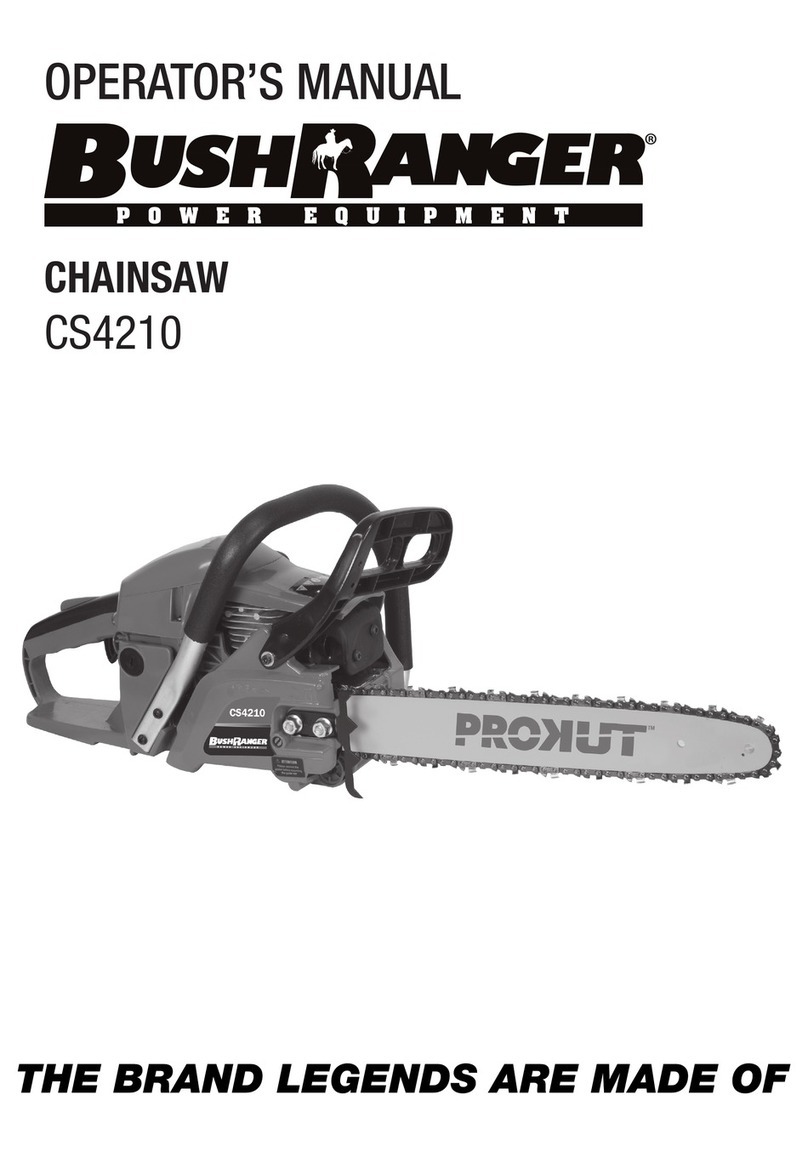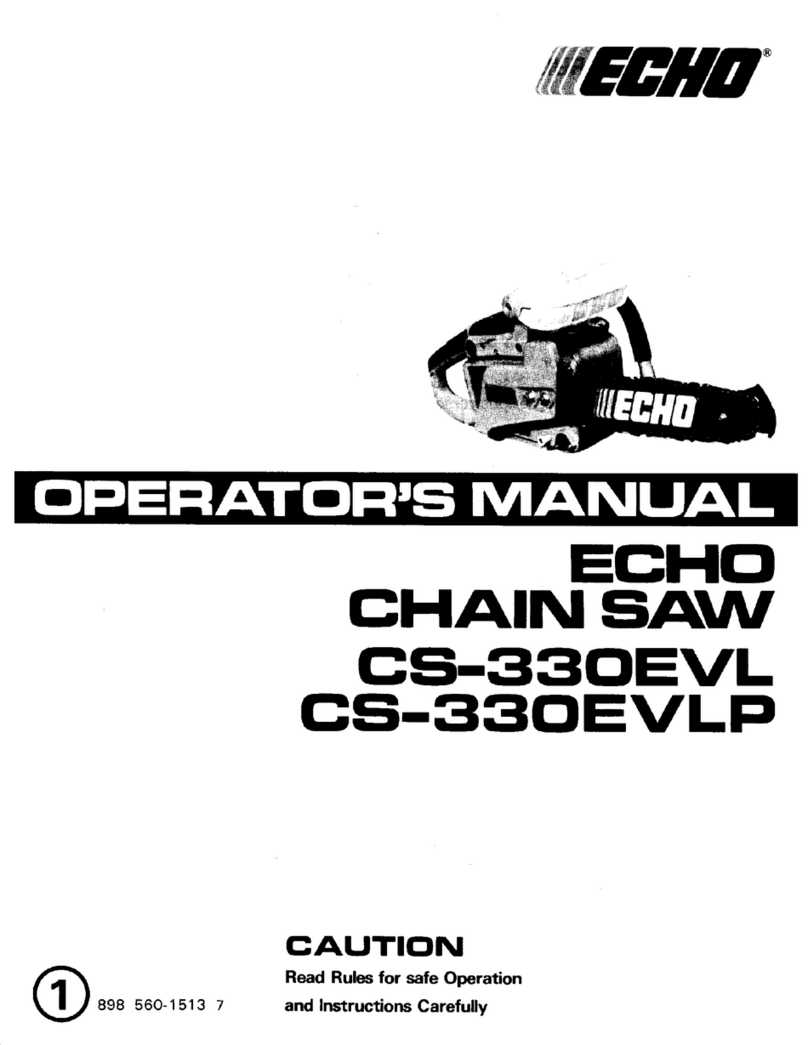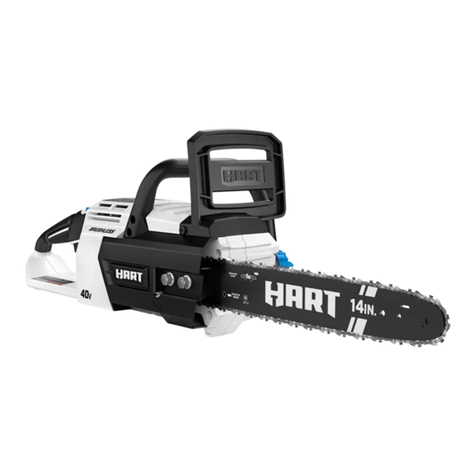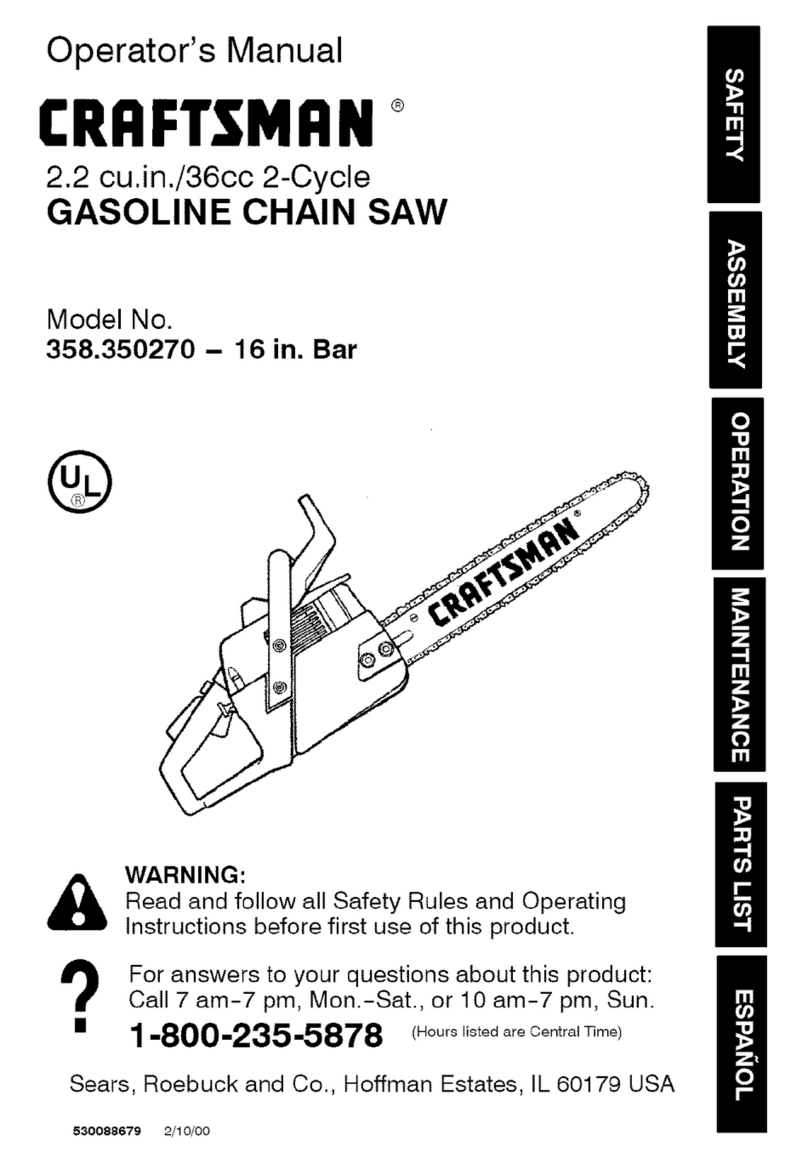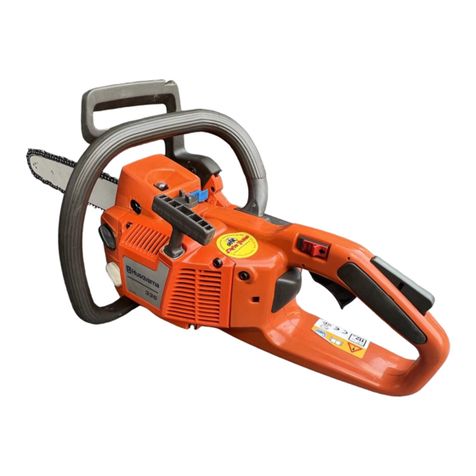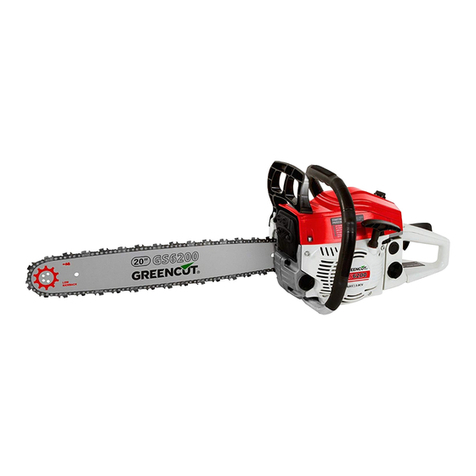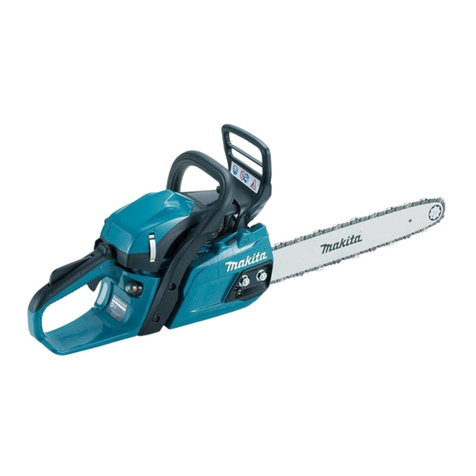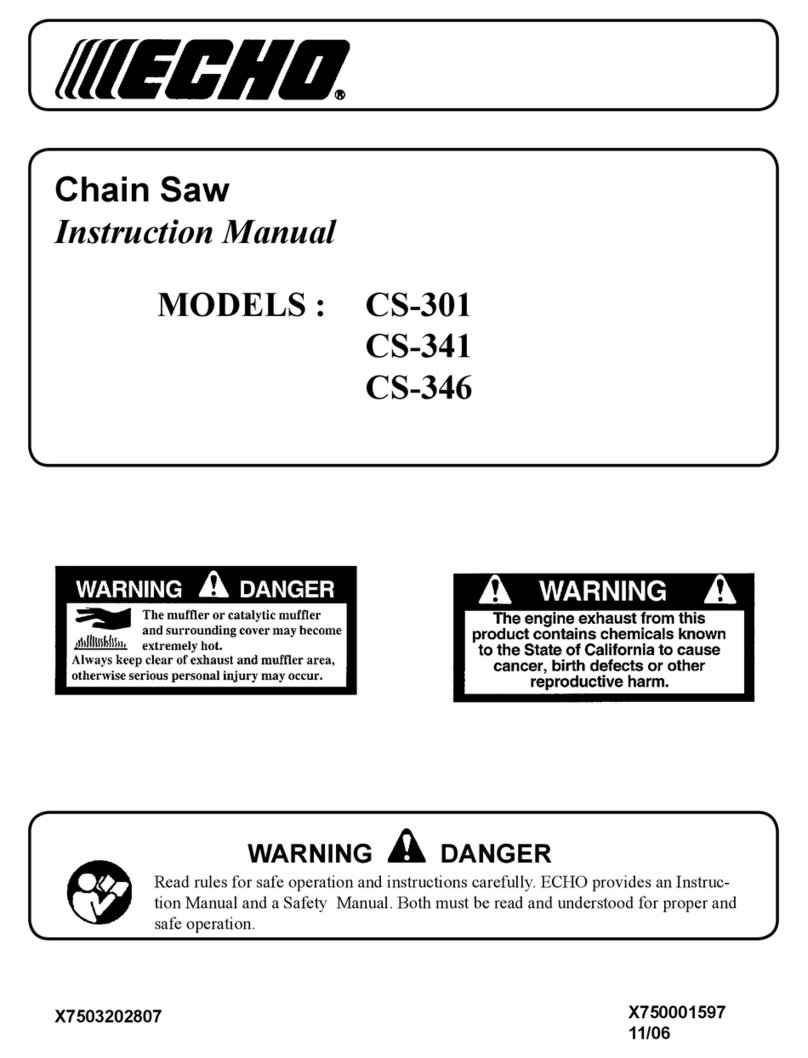MSA 160 C, MSA 200 C
English
6
To replace the saw chain, switch off the
saw, move the hand guard to ƒ and
remove the battery. This avoids the risk
of injury from the motor starting
unintentionally.
Your power tool is equipped with a
system designed to quickly stop the saw
chain – it comes to an immediate
standstill as soon as you release the
trigger switch – see "Coasting Brake".
Check this function at regular short
intervals. Do not operate your chainsaw
if the chain continues to run after you
release the trigger switch – see
"Coasting Brake" – risk of injury. Contact
your servicing dealer.
Never operate your saw without proper
chain lubrication – check oil level
regularly during operation. Stop work
immediately if the oil level is too low and
refill the oil tank – see also chapters on
"Filling Chain Oil Tank" and "Checking
Chain Lubrication".
If your saw is subjected to unusually
high loads for which it was not designed
(e.g. heavy impact or a fall), always
check that it is in good condition before
continuing work – see also "Before
Starting Work". Make sure the safety
devices are working properly. Do not
continue operating your saw if it is
damaged. In case of doubt, consult your
servicing dealer.
After finishing work
Switch off the chain saw, set the hand
guard to ƒ, remove the battery from the
chain saw and fit the chain scabbard.
Storage
When the machine is not in use, it
should be stored in such a way that no-
one is endangered. Secure the machine
against unauthorized use.
The chain saw must be stored in a dry
room with the hand guard set to ƒ and
only with the battery removed.
Vibrations
Prolonged use of the power tool may
result in vibration-induced circulation
problems in the hands (whitefinger
disease).
No general recommendation can be
given for the length of usage because it
depends on several factors.
The period of usage is prolonged by:
–Hand protection (wearing warm
gloves)
–Work breaks
The period of usage is shortened by:
–Any personal tendency to suffer
from poor circulation (symptoms:
frequently cold fingers, tingling
sensations).
–Low outside temperatures.
–The force with which the handles
are held (a tight grip restricts
circulation).
Continual and regular users should
monitor closely the condition of their
hands and fingers. If any of the above
symptoms appear (e.g. tingling
sensation in fingers), seek medical
advice.
Maintenance and repairs
Before any repair, cleaning or
maintenance work and any work on the
cutting attachment, always switch off the
chain saw, set the hand guard to ƒ and
remove the battery from the chain saw.
If the saw chain starts inadvertently –
risk of injury!
The machine must be serviced regularly.
Do not attempt any maintenance or
repair work not described in the
Instruction Manual. All other work should
be carried out by a servicing dealer.
STIHL recommends that maintenance
and repair work be carried out only by
authorized STIHL dealers. STIHL
dealers receive regular training and are
supplied with technical information.
Use only high-quality spare parts.
Otherwise, there may be a risk of
accidents and damage to the machine. If
you have any questions in this respect,
consult a servicing dealer.
Do not modify the chain saw in any way
– this can be extremely dangerous –risk
of accidents!
Check existing electrical contacts,
power cords and power plug of the
charger for undamaged insulation and
aging (brittleness).
Electrical components, e.g., the power
cord of the charger, may only be
repaired and/or replaced by qualified
electricians.
Inspect chain catcher – replace if
damaged.
Observe sharpening instructions – for
safe and proper handling, always keep
the saw chain and guide bar in flawless
